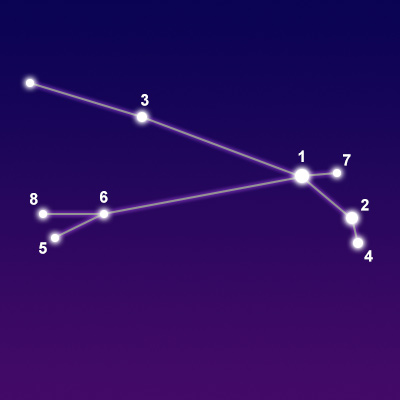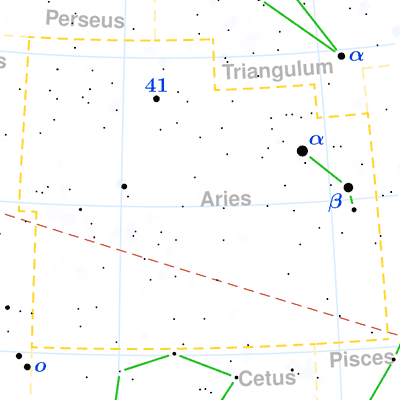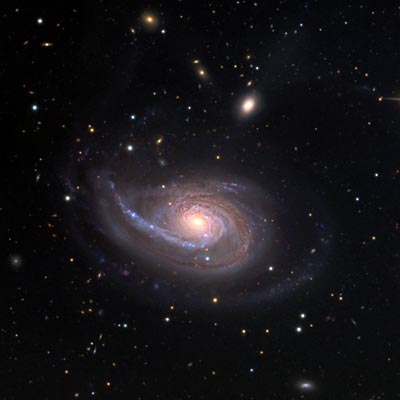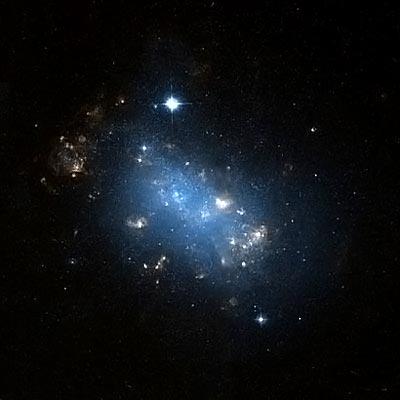Pronunciation:
(EH-reez)Abbreviation:
AriGenitive:
ArietisRight Ascension:
3 hoursDeclination:
20 degreesArea in Square Degrees:
441Crosses Meridian:
9 PM, December 10Visible Between Latitudes:
90 and -60 degreesThe constellation Aries, the ram, can be seen in the northern hemisphere during the late winter and early spring. It is visible at latitudes between 90 degrees and -60 degrees. It is a medium-sized constellation bounded by Taurus, Pisces, and Cetus. It is one of the 48 constellations described by Ptolemy in the second century. Aries is the 39th largest constellation in the night sky, covering an area of 441 square degrees. It is also one of the thirteen constellations of the zodiac. This means it lies along the path the Sun travels in the sky during the year.
The name Aries is Latin for “ram”. It is an ancient constellation which has been known by many forms throughout history. To the early Babylonians, these stars represented a farmhand. The early Chinese saw it as twin inspectors. To the inhabitants of the Marshall Islands, it was a porpoise. In Greek mythology, it represented the ram from which the golden fleece was obtained in the story of Jason and the Argonauts. The constellation was officially recognized by the International Astronomical Union in 1922, and its boundaries were defined in 1920 by Belgian astronomer Eugène Delporte.

points of interest below © Sea and Sky

© Torsten Bronger CC BY-SA 3.0
Sheratan
41 Arietis
Mesarthim
Botein
Epsilon Arietis
Lambda Arietis
Zeta Arietis
"The Two Signs"
N/A
"The Fat Ram"
"Little Belly"
N/A
N/A
N/A
Blue-White Subgiant Star
Blue-White Dwarf Star
Binary Star System
Orange Giant Star
Binary Star System
Double Star System
White Dwarf Star
2.64
3.63
3.86
4.35
4.63
4.79
4.89
Aries is a relatively dim constellation containing only 4 bright stars. Hamal is the brightest star in the constellation with a visual magnitude of 2. It is an orange giant star located 66 light years from Earth. The second brightest star is Sheratan at magnitude 2.64. This is a blue-white star located about 59.6 light years from us. At magnitude 3.86, Mesarthim is the third brightest star. It is a binary star system located 160 light years distant. The two stars can easily be resolved in a small telescope.
Aries contains no Messier objects, but does contain a few extremely dim galaxies which can only be seen in very large telescopes. NGC 772 is an unbarred spiral galaxy located approximately 130 million light years from Earth. Two supernovas have recently been discovered in this galaxy. It is surrounded by a few smaller satellite galaxies. NGC 1156 is a dwarf irregular galaxy located about 17 million light years from our solar system.


© Fabian RRRR / CC BY-SA 3.0



